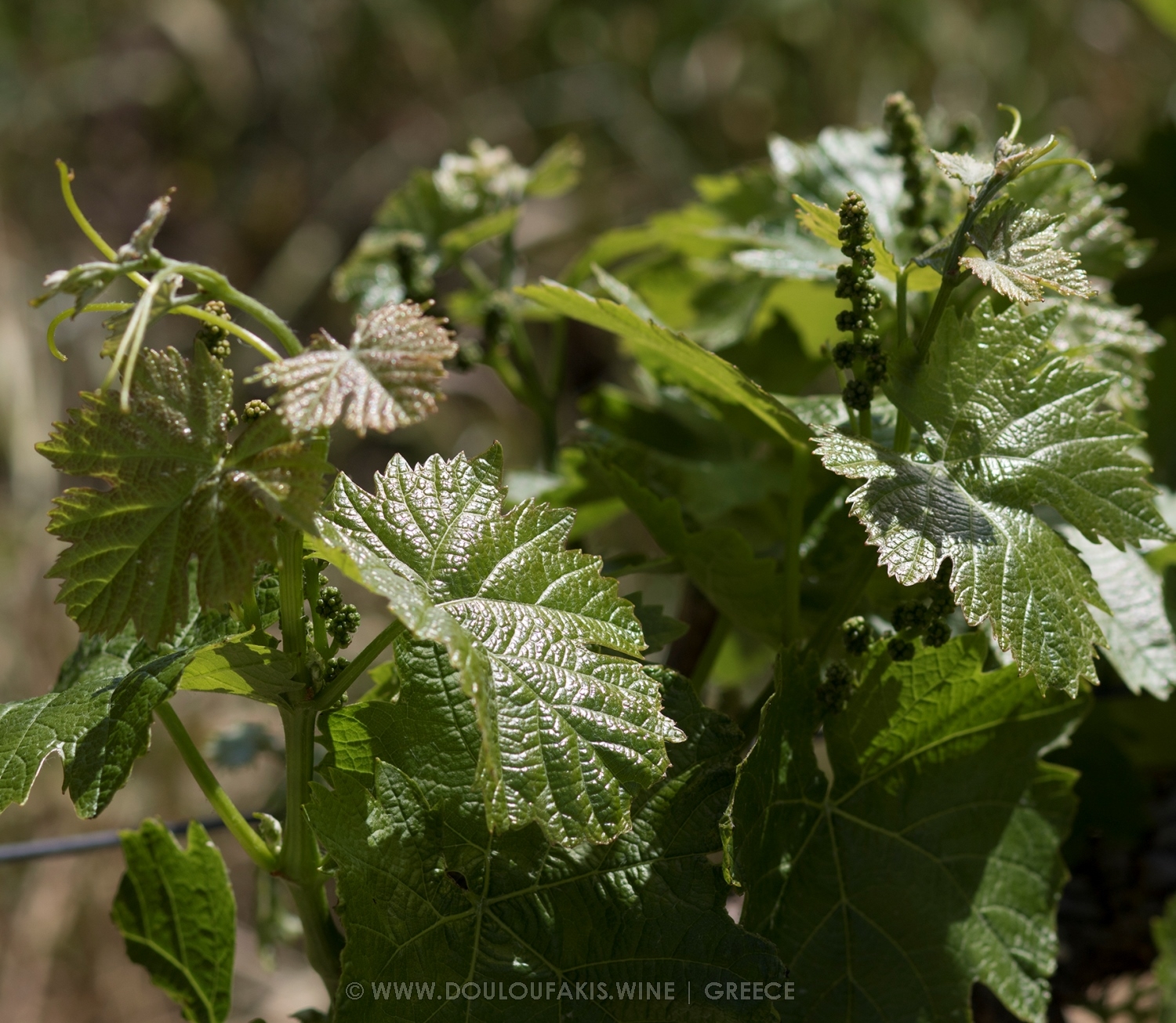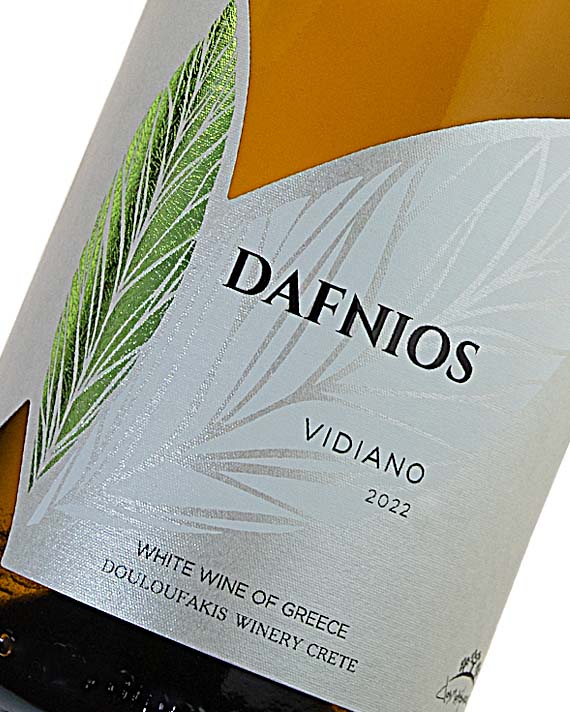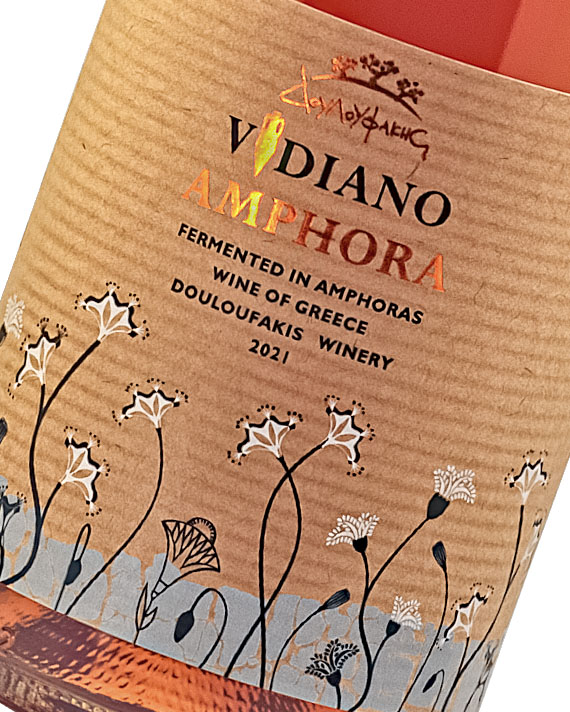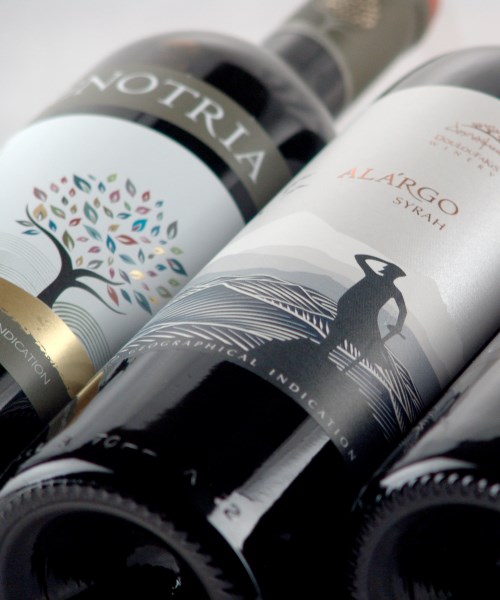An old indigenous cultivar, which is also mentioned as "Avidiano". Vines of Vidiano were scattered among other varieties in the old vineyards of Crete. It is a vigorous and productive variety, late-ripening in the Dafnes vineyard and resistant to heat. Vidiano gives us wines with rich, fruity aromas, full body and balanced acidity. The strong points of the wine are its volume, its ageing potential and its suprising evolution over time. Those three characteristics make it unique, since there aren’t many varieties in Greece featuring such qualities.
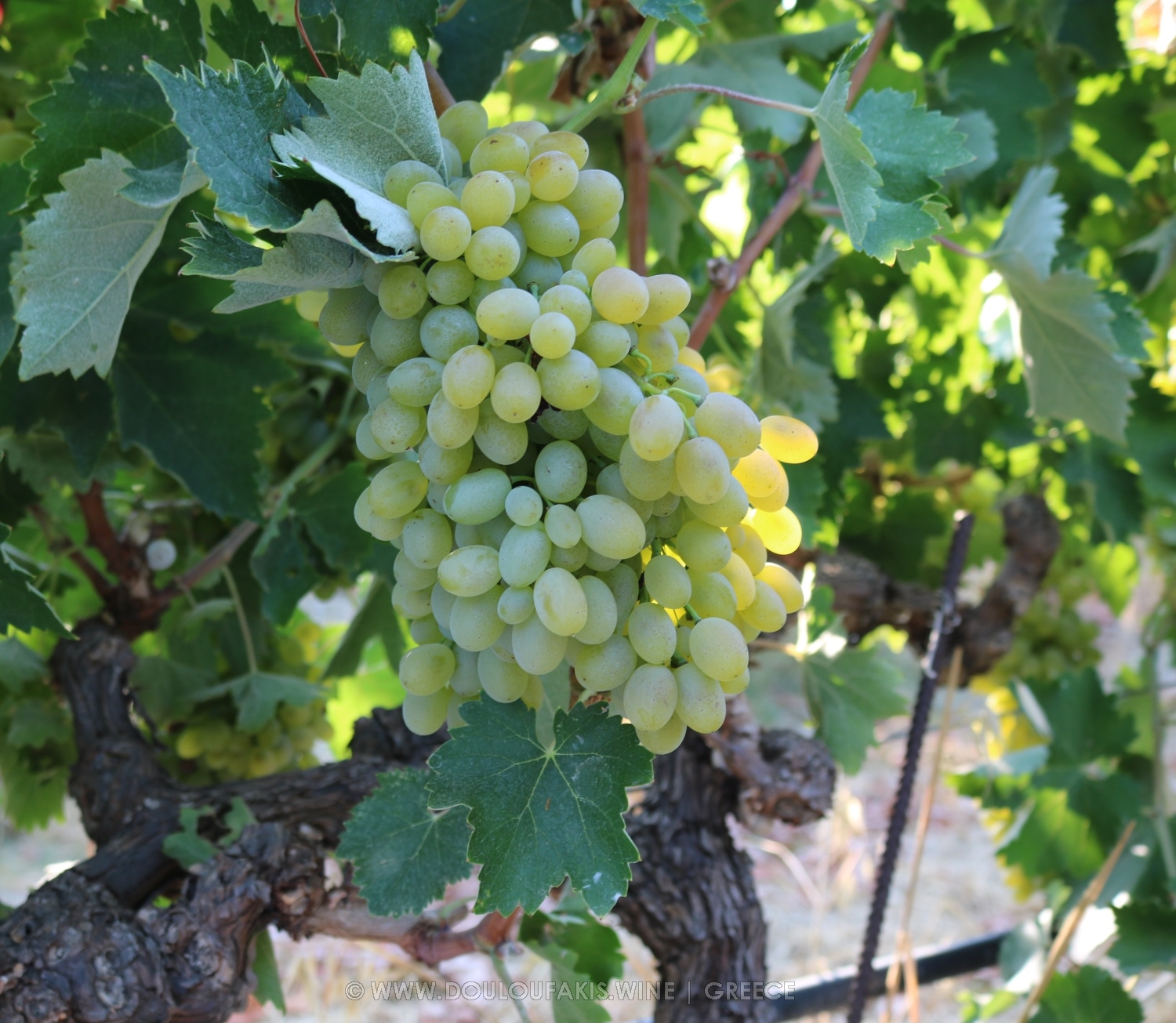
 The Holy Monastery of Panagia Vidiani at Lassithi Plateau.
The Holy Monastery of Panagia Vidiani at Lassithi Plateau.The history of the grape variety
Vidiano
One version, is that Vidiano was cultivated in Heraklion Prefecture and its name is deriving from Avdou village. Then it was transferred to Rethymno by refugees from Avdou who settled in a small village in Mylopotamos named "Avdanites".
Another version, perhaps the most reliable for its origins, is that it comes from the Prefecture of Lassithi. The "Vidis", an old family of Venetian patricians, are mentioned in documents of 1249 as inhabitants of Chandakas (Heraklion) and owned manors in the Prefecture of Lassithi. The current Vidiani Monastery located on the northwest side of the Lassithi plateau is built on the "metochio di Vidi" or "Vidiano", the old property of this family.
A third version is that Vidiano originates from the Prefecture of Rethymno.
By the end of the 20th century, the variety had really been forgotten.
There were scattered vines in the old multivarietal vineyards, throughout the Prefecture of Heraklion. It was also cultivated in the region of Lassithi, where is located the Holy Monastery of Panagia Vidiani, northwest of the Lassithi Plateau.
Thanks to the intense efforts of the winemakers of Crete, very old, self-rooted vines were located in Rethymno and thus the variety was revived and developed in mono-varietal vineyards. After the advent of phylloxera, the cultivation of self-rooted vines was limited and the use of grafted American roots is mandatory.
Although Vidiano plants were scattered among other varieties for decades, it had given marks of its importance. Many winemakers knew that this variety had great potential and it was worth increasing the acreage dedicated to its cultivation.
VINEYARD CULTIVATION
VIDIANO GRAPE VARIETY
In Dafnes area the soil has medium texture and it is characterized as clay loam. It is rich in calcium carbonate in a percentage that exceeds 40%.
The presence of calcium carbonate that neutralizes the acidity of the soil, in connection with the pH that ranges from 7 to 8.5, is ideal for the absorption of most trace elements by the plant.
Calcium carbonate also improves soil structure, ensuring good drainage and good soil temperature. These soil characteristics contribute to the good phenolic and technological ripening of the grapes and therefore to the production of wines with rich structure and volume, intensity in colour and balanced acidity.
The vineyards in Dafnes area are located northeast of Psiloritis Mountain, which is the highest of the island, with an altitude 2456m. The relief of the wider area is formed by rolling hills, almost parallel to each other, extending from the northern part of the prefecture to the south at an altitude of 300-500m. The vineyards are planted on the slopes of these hills, east or west oriented.
The elongated valleys that are formed between the hills serve as natural canals, transferring the conducive chilled breeze from Cretan Sea to the center of the prefecture, maintaining the temperature at the slopes at very good levels all around summer. Rainfall is rare during the summer, so plants and grapes avoid virus infections.
Due to this unique microclimate the cultivation of vines in the area is lasting for many centuries and written historical sources can be found since the time of Venetian rule from 11th to 15th century AD.


Lately, we apply long Guyot pruning, which corrects this imbalance, resulting in controlled production in both quality and quantity.
The weight of the grape is medium to large and the weight of the berry is small. The content of grape sugar is high, while the acid content is moderate to high.
The great advantage of Vidiano in Dafnes is that it fully matures in sugars and aromatic elements, while at the same time it presents a great concentration.
THE VINE DESCRIPTION
OF THE VIDIANO VARIETY
Young leaf: of yellow-green colour with bronze areas, cobwebby to downy upper side and felty lower side.
Leaf blade: thick, twisted, cobwebby upper side and felty lower side.
Petiolar sinus: medium deep, closed with slightly overlapping lobes and U-shaped base.
Veins: glabrous, locally cobwebby upper side, silky lower side.
Serrations: small to medium, unequal, convex, in three series
Petiole: medium, thick, cobwebby, almost equal to the length of the main vein.
The vine description was based on "The Cretan Grapes", a book by Manolis Stavrakakis and Maritina Stavrakaki.

PHENOLOGICAL DATA
OF VIDIANO VARIETY
• Vegetation: March 10-20
• Full vegetation: In the second 10 days of April
• Flowering beginning - full flowering: May 15-20
• Maturation beginning: In the third 10 days of August – the first 10 days of September
TECHNOLOGICAL CHARACTERISTICS OF THE MUST
OF A FULLY MATURED VIDIANO
• Total acidity: 6.0 - 7.0 g/L
• Active Acidity pH: 3.2 - 3.4
GREEK LEGISLATION FOR VIDIANO VARIETY
It also belongs to the permissible vinifiable vine varieties in the regions of North Aegean, Thrace, Macedonia and Peloponnese.
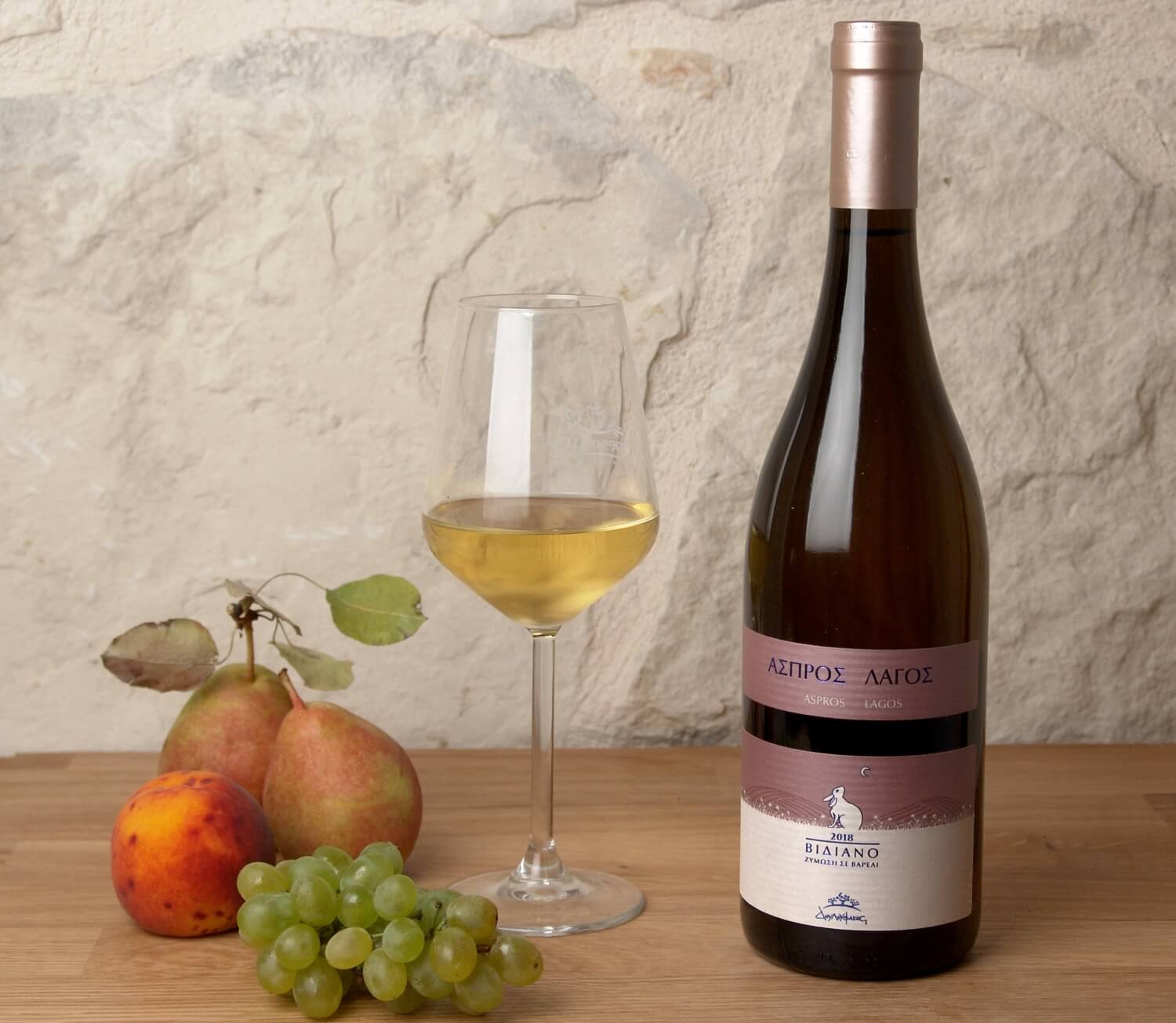
The characteristics of Vidiano wine
A fresh Vidiano starts from a very light golden colour that over the time evolves into the colour of gold.
The complex aromatic bouquet combines unique, white citrus flowers with ripe apricots and peaches, while hints of aromatic herbs such as chamomile and linden tea can be seen in the background, to end up with a seductive minerality when aged.
The mouth is dominated by the same aromas of stone fruits, while the crunchy acidity of youth is balanced by the full body. The aftertaste is long and fruity.
Its evolution over the time is fascinating, as the fresh fruity aromas evolve into butter, notes of wax, dense apricot, melon, flintstone, which are all characteristics of the variety.
Its ability to evolve aromatically over time, the intense acidity in combination with the full body, give it the chance to age for at least 5 years when it has been vinified in a tank, while if we give it the power of tannins, by barrel vinification, it can age for even a decade.
Its versatility, complexity, the character and finesse have rightly made it the finest white variety of the Cretan vineyard and one of the most important greek white varieties.
 DE
DE  RU
RU  EL
EL  EN
EN 
